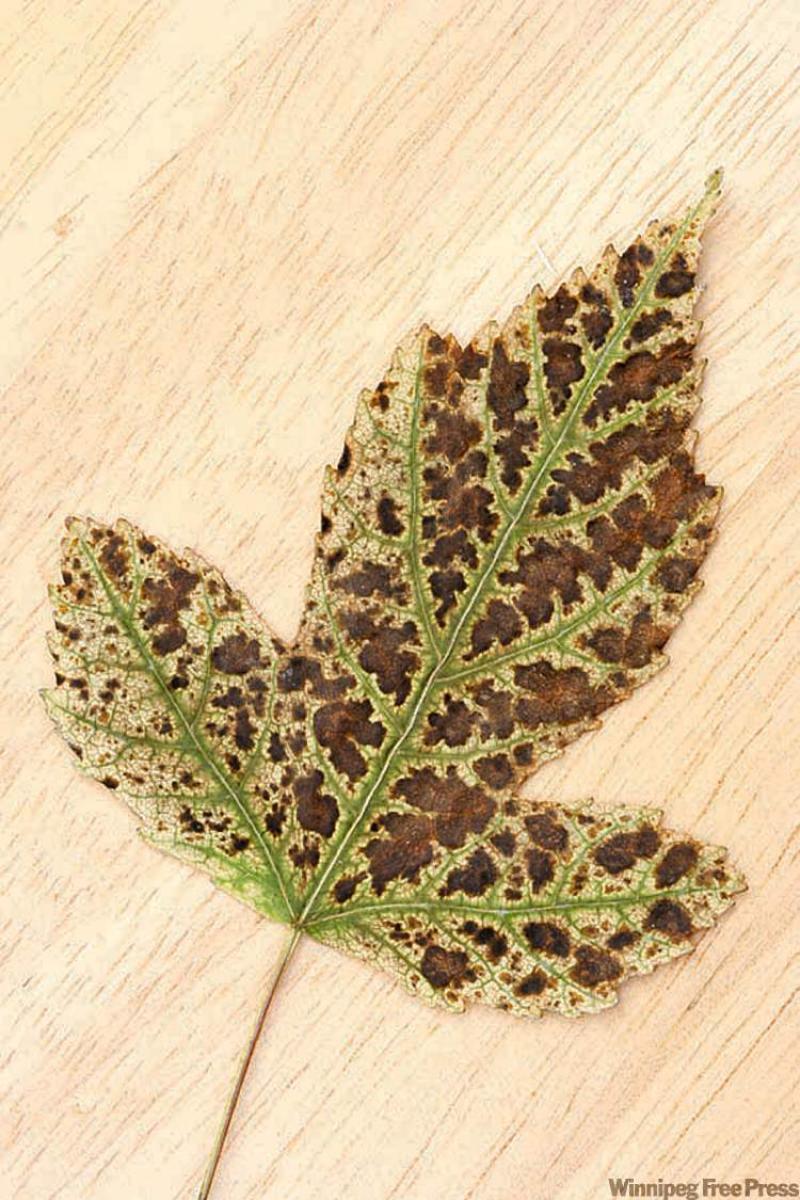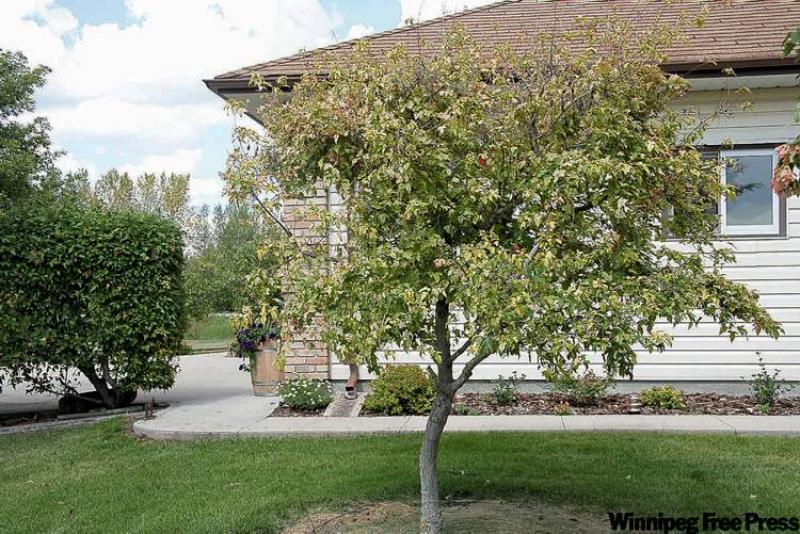
IT takes two consecutive summers of heavy rainfall to realize that nutrients essential for the growth of plants are being leached into the sub soil and out of reach for the plants' roots. This year I have seen without exceptions hundreds of properties where the plants are experiencing nutrient deficiencies. In most cases nitrogen in the form of nitrates is the major nutrient deficiency.
In an earlier article in this column this year I wrote about the nutritional deficiency called chlorosis that commonly shows up on most ornamental trees and shrubs. The typical signs show up on the leaves causing them to turn yellow prematurely usually with some pattern of darker green veins.
I am often asked, "Why do so many of our trees and shrubs become nutrient deficient whereas others do not?" If you look carefully at our native or indigenous trees that grow on clay soils in the Red River regions such as bur oak, Manitoba maple, plains cottonwood, basswood, American elm, green ash, choke cherry, native willows, balsam poplar, and red osier dogwood they rarely show signs of nutritional deficiency. The reason is that they have evolved on these soils for many millennia. There is a great deal of genetic variability in these native plants that allows them to cope with changing environmental conditions.
Most of the trees and shrubs that are planted in urban gardens in southern Manitoba developed through genetic manipulation for some outstanding feature. For example, Schubert chokecherry was bred from the native chokecherry tree for its purple leaf colour. Once that colour feature was developed the trees were then propagated by cloning to maintain that consistent leaf colour character. Plant clones of any kind usually have less vigour than the native parent or parents. Furthermore, the clone may become more susceptible to diseases, pests, structural wood problems and nutritional deficiencies. Clones or cultivated varieties dominate the supply of trees and shrubs in most nurseries and garden centres.
Amur maple is a small tree bred for its red fall leaf colour. It is also one of the most susceptible to develop leaf chlorosis. Like all chlorotic plants it needs a supplement to release whatever nitrates are in the soil. That supplement for the most part is iron chelate which should be added to the nitrogen-based fertilizer. These susceptible trees and shrubs should be treated with fertilizer and iron chelate at least once a year -- spring or fall. I do mine twice a year -- once in mid-May and again once in mid-June.
In most instances advanced nutritional soil deficiency leads to a weakening of the plant to deal with diseases. In Amur maple, anthracnose disease invades the yellow-white leaves and kills them. Left untreated the disease kills the twigs and branches. The tree can then be susceptible to a serious, often lethal disease, called black rot which among other things splits the bark on the trunk and branches. In the Schubert chokecherry severe chlorosis fosters higher infection rates of black knot disease. That disease can quickly overcome some trees and quickly kill them.
Other common woody plant clones that can succumb to nutritional deficiencies and subsequent disease are pink flowering spireas, hydrangeas, ninebarks, European mountain ashes, tower poplars, Swedish aspens, silver maples, roses, Japanese barberries, cotoneasters, elderberries, dogwoods, grape vines, Virginia creeper and many more.
Prepare to add regular fertilizing with added iron chelate to your gardening chores if healthy plants are your objective.
Michael Allen is a consulting urban forester and certified I.S.A. arborist and owner of Viburnum Tree Experts. He makes house and garden visits to assess tree and shrub problems. He can be contacted by calling 831-6503 or by email at viburnumtrees@shaw.ca You can also mail questions to Michael Allen, c/o Newsroom, Winnipeg Free Press, 1355 Mountain Ave., Winnipeg, MB, R2X 3B6. His website is www.treeexperts.mb.ca




